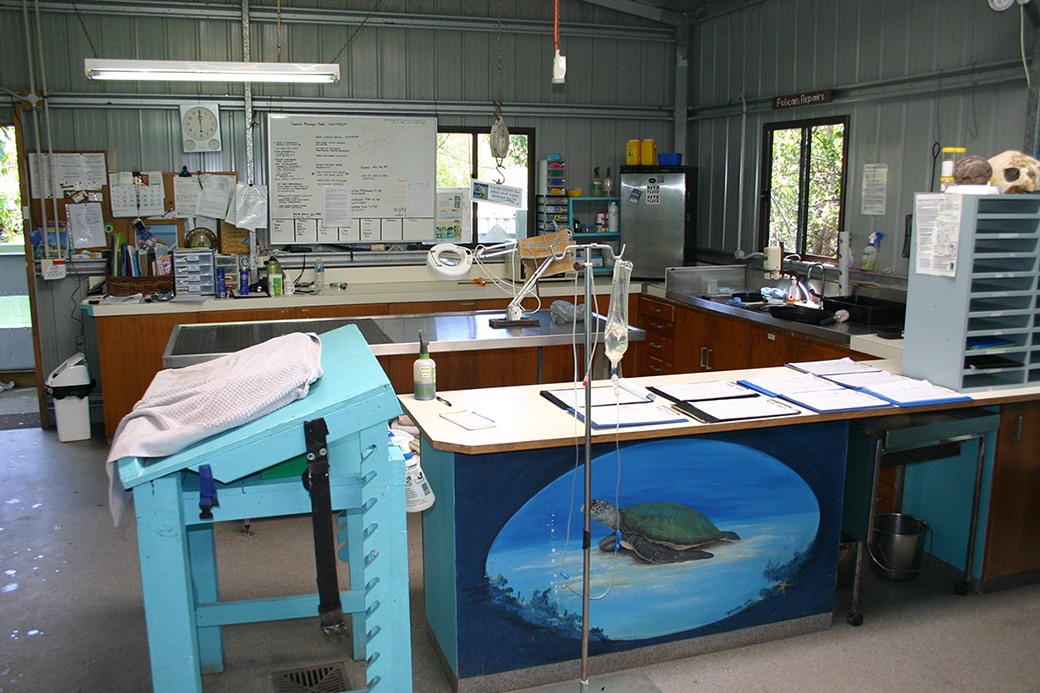Our little corner of Australia is pretty special, just in case you hadn’t noticed. It is an oceanic Elysium, paradise found for an abundant wealth of marine life. It’s unique geography brings humpback whales close to shore, serves as a nesting area for a proliferation of common and endangered seabirds and is a protected sanctuary for turtles, dolphins, sharks and all manner of sea creatures.

An ideal venue for observing and experiencing this wonderful diversity, it also means that we have an above average quota of creatures in need of our help.
Pelicans caught in fishing line, turtles ingesting plastic and exhausted shearwaters are all in a day’s work for the team of volunteers at the Australian Seabird Rescue centre in Ballina. Pouring their time, energy and love into the cause, this small band of tireless workers saves the lives and rehabilitates dozens, if not hundreds of marine creatures every year.
“Australian Seabird Rescue started in 1992 when Lance Ferris found a pelican tangled in fishing line on the Richmond River,” explains the branch’s general manager, Kath Southwell. “From there, he realised that there are so many waterways on the East Coast of Australia where there were seabirds suffering from the same injuries. Because he was doing such a great job with the pelicans and seabirds, people just started bringing turtles to him because there was no one else locally that they could turn to.”

With endless kindness and compassion, but no proper facilities, Ferris soon found himself overwhelmed with sick wildlife and drastically under-equipped. But fortunately fate, and the open hearts of total strangers, would provide.
“A year or so later, he was on Australian Story on the ABC. Some people saw all the incredible work he was doing and offered to buy some land, and that’s how we established this site.” These wonderful philanthropists also provide a minimal salary for Kath, the centre’s only paid staff member, although she still works many more volunteer hours every week.
At the far end of North Creek Road, far beyond the commerce and fumes of Ballina’s industrial estate, lies the little oasis called home by Australian Seabird Rescue. Complete solitude envelops you as you walk past the lake toward the two buildings; to the left, the display centre, used for talks and events, to the right, the rehabilitation centre, where turtles are received, weighed and registered before being homed in large, saltwater tanks.

The centre lies on the shore of the Ballina River, the perfect place to release wildlife once it has been nurtured back to good health, although this can take a while. Seabirds caught in trash may recover in the safety of the centre’s aviary relatively quickly, reintroduced to their natural habitat within just a few weeks in some cases. But for turtles,
the road to recovery is long and uncertain. It may take as much as a year for a turtle to be deemed fit for release but some, even having made encouraging progress, lose their battle after several months.
Education is a vital part of the work done by Australian Seabird Rescue. Kath and her team regularly host school groups, teaching them not only about turtles and seabirds and how to identify turtle tracks in the sand, but also what to do if they find a nest, a sick turtle or an injured seabird, how mankind is threatening these creatures and what steps we need to take to protect our marine life.

“There are so many things you can do for Australian Seabird Rescue,” says Kath. “Obviously you can help us raise money, but you can also spread the message to reduce the human impact on marine wildlife, you can come down here and volunteer, helping us to feed the animals, cleaning and helping do all the work that’s needed to run this centre.”
One man who is already abundantly aware of the need for turtle protection is Jhana Bowen. Jhana featured in our recent story, Yertle’s Protector, and is founder of the Turtle Conservation Project, raising money specifically for the protection of turtles along our coastlines. The project’s inaugural event launched the project officially and raised awareness of and funds for the fantastic work done by Australian Seabird Rescue.
“It’s a dream come true,” Reflects Jhana of his visit to the centre. “For me, turtles are my totem really, a signal to remind myself that I’m part of something much bigger. Being here, seeing these turtles in real life, is just wild. And then meeting Kath, seeing the light in her eyes and hearing that she’s so grateful knowing that we care is wonderful. That cheque that we presented to her is made up of hundreds of donations. It is a symbol of how many other people care and it really touches my heart every time I see how many people do care.”

More and more, we are seeing the youth as a brighter future than the present we have created for them. The three ‘R’s have moved from Reading ‘Riting and ‘Rithmetic to Reduce, Reuse Recycle, the standard curriculum now incorporating conservation and ecology as much as it does science and history.
Australian Seabird Rescue is not only serving as guardian to our unique population of marine creatures, it is also helping forge the way, through the education of our children, towards a new and beautiful future. Our hopes are in their hands.
If you would like to visit Australian Seabird Rescue, volunteer or organise a school or club excursion, please contact Kath Southwell at:
Phone: (02) 6686 2852
General Manager – Kath Southwell
Email: admin@seabirdrescue.org
seabirdrescue.org/branches/north-coast
Most importantly, save these numbers in your mobile phone right now: 0428 862 852 / (02) 6686 2852.
These are the numbers to call if you should find an injured marine creature. The Australian Seabird Rescue team will advise you what to do and come to collect the animal as quickly as they can.





